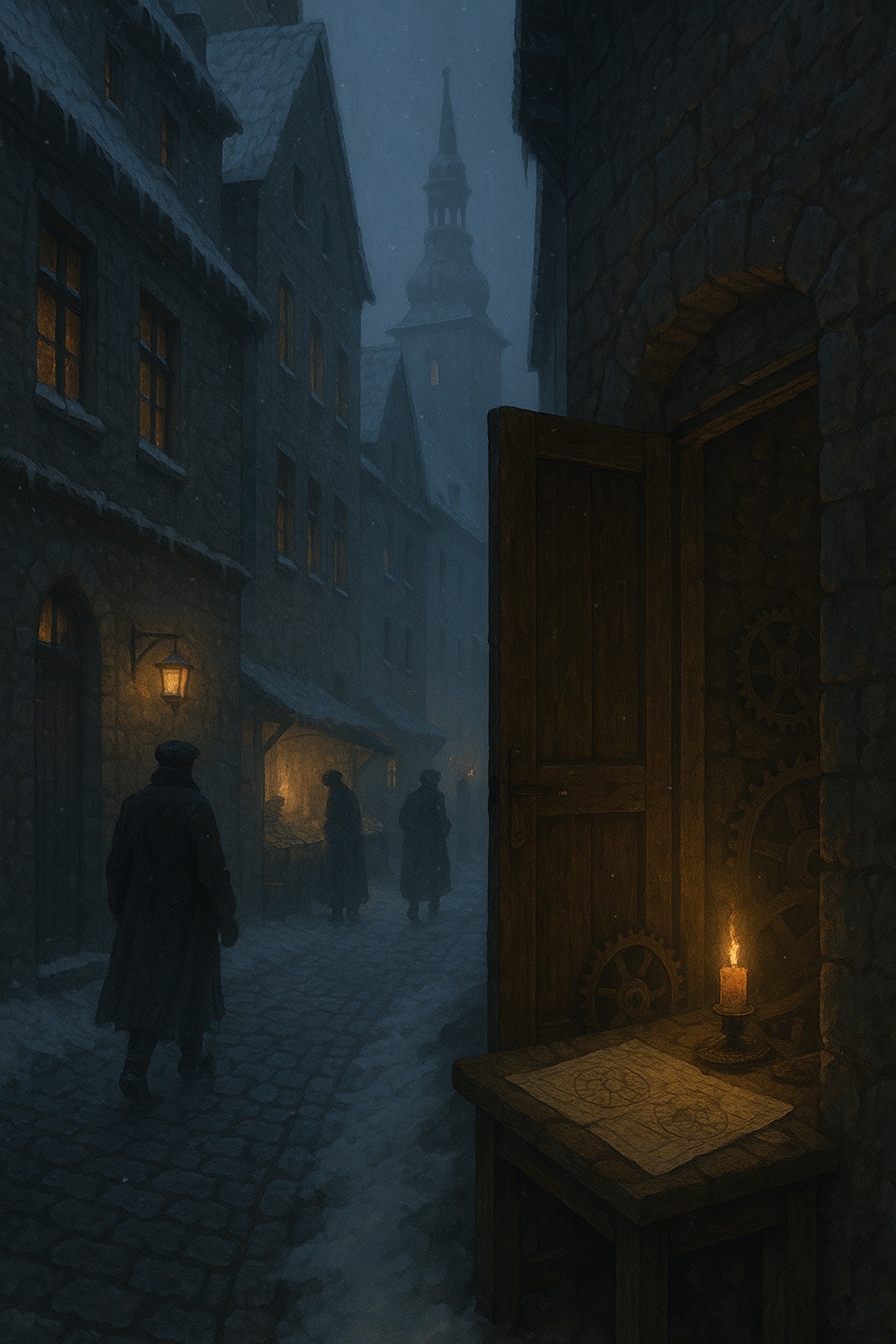Intro
Estonia, 1843.
A time of soft revolutions and unseen awakenings.
Beneath the frostbitten eaves of Reval, past the candlelit stalls and stone facades of a merchant city, lives a boy who dreams not of swords and sorcery, but of patterns—pure, eternal, and unyielding. His name is Mihkel, the merchant’s son. And though the world around him sways to the rhythms of toil and tradition, he listens to subtler music: the silent elegance of numbers.
Sent to the Imperial University of Dorpat, Mihkel finds little enchantment in the laboratory halls and Latin lectures. The world of men appears dull, its machinery coarse, its politics petty. But one afternoon, in the dust-thick quiet of the university library, he stumbles upon diagrams of Charles Babbage’s „Analytical Engine“, and something ancient stirs—a childhood fantasy reborn as a mechanical blueprint.
From gears and parchment, springs an idea. From idea, a device: The Logic Mill. Hidden in an abandoned workroom, cobbled together from scrap and salvaged promise, it is neither spell nor sermon—but a machine capable of weaving the fabric of logic itself.
He cannot show it. He dare not. In a land where printing a poem in Estonian is seen as defiance, what would they do with a boy who builds minds from brass?
And so, the march begins.
Each week, Mihkel encounters a new puzzle—some born of the land, some whispered by folklore, and others still sprung from the very tension between nature and number.
As he tunes the Logic Mill and refines its language, so too do you.
Together, you will translate muddy peasant requests and lofty academic riddles into precise, elegant instructions.
For this is not a game of answers, but of methods. Of building universals from particulars. Of seeing, even in the gnats that buzz by the river, a trace of logic’s great march.
